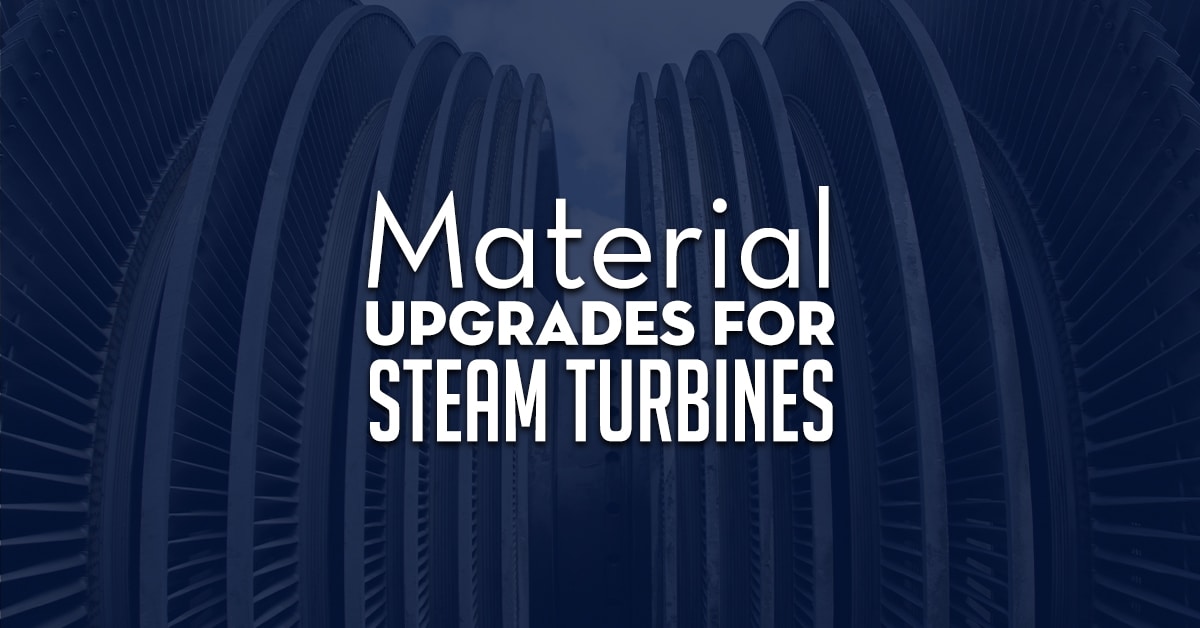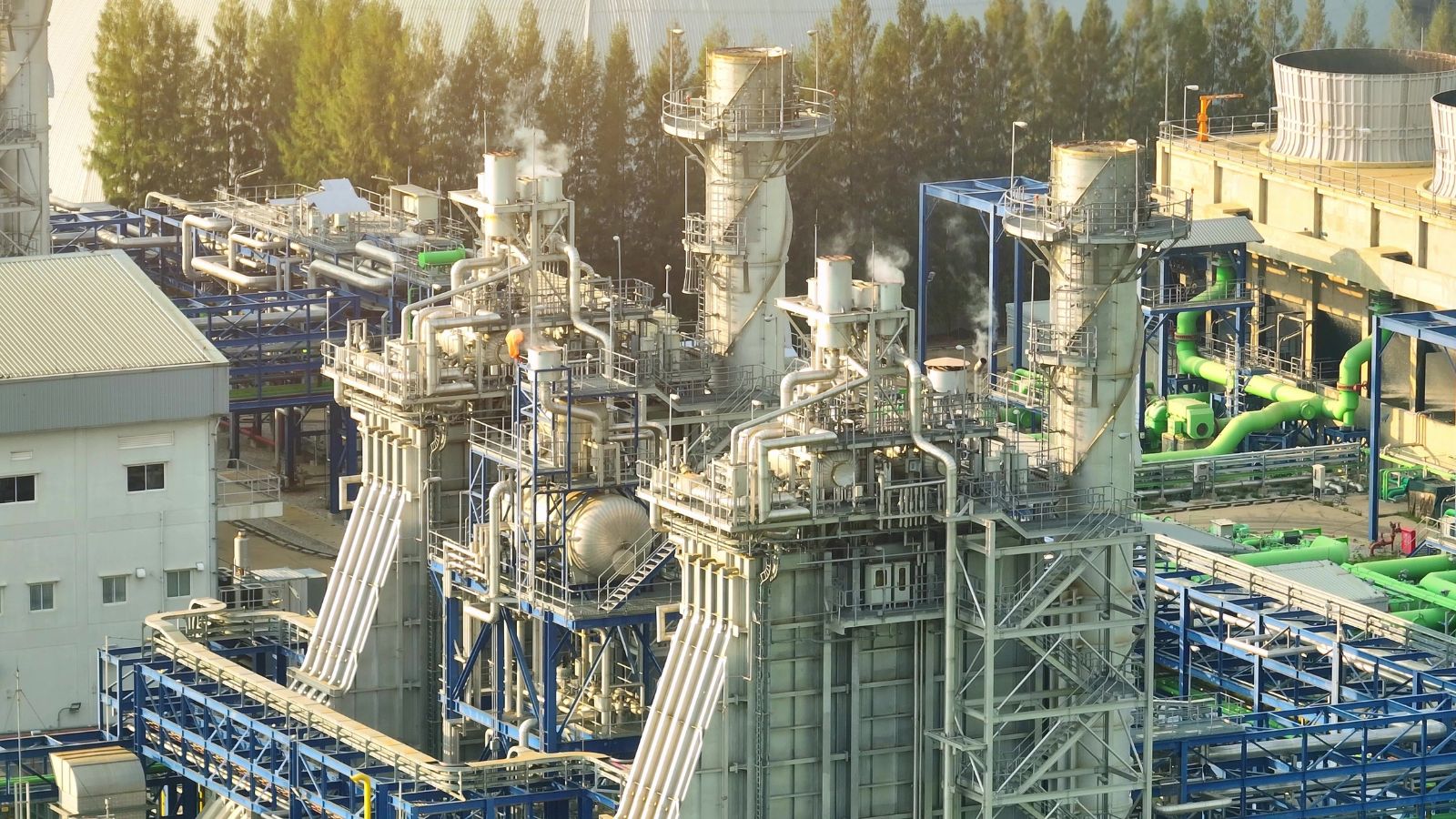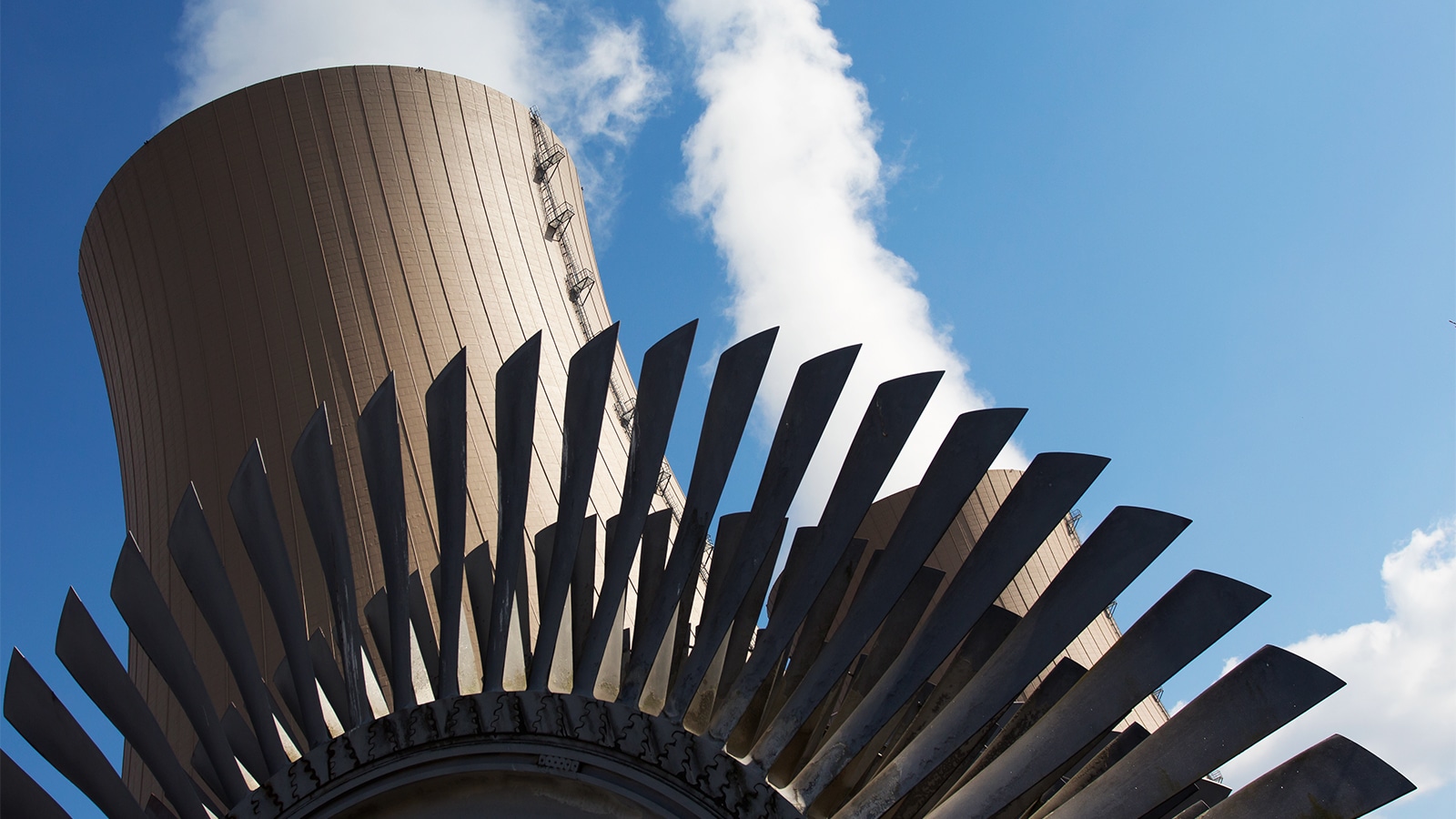
Power plant operators in the United States face significant challenges due to aging infrastructure. Component failures and declining efficiency threaten operational reliability. Modern turbine upgrade solutions offer a path forward to restore peak performance.
According to EPRI surveys, approximately 1,500 turbines operate nationwide with 400,000 MW capacity. These units average 38 years in service age. High-pressure component failures cause the greatest capacity losses, while low-pressure sections contribute to more forced outages.
At Allied Power Group, headquartered in Houston, Texas, we specialize in retrofit solutions. Our expertise transforms aging equipment into high-performing assets. We understand the critical importance of maintaining generator reliability in today’s competitive energy market.
Strategic material enhancement of turbine efficiency through targeted hardware improvements delivers cost-effective solutions. Our approach encompasses rotor components, blade assemblies, and sealing systems manufactured to OEM specifications.
Key Takeaways
- Aging power plant infrastructure averages 38 years, requiring strategic modernization approaches
- Component failures in high-pressure sections cause the most significant capacity losses
- Comprehensive retrofit solutions can restore peak performance and extend operational life
- Professional expertise ensures upgrades meet OEM specifications and industry standards
- Strategic hardware improvements deliver measurable efficiency gains and reliability improvements
- Targeted solutions address both high-pressure capacity issues and low-pressure outage concerns
Why Steam Turbines Require Material Upgrades
Today’s steam turbine operations expose fundamental limitations that only material upgrades can resolve. Power plants across the United States face unprecedented challenges as equipment ages and operational demands intensify. We understand that addressing these issues requires solutions that go beyond routine maintenance.
Combined cycle plants experience declining performance due to component degradation and changing operational requirements. Steam turbines originally designed for moderate steam conditions now operate under extreme pressures and temperatures. These demanding environments create cascading problems that traditional repair methods cannot adequately address.
At Allied Power Group, our expertise in industrial steam turbine repair allows us to identify and address the root causes of turbine degradation and performance issues. Our approach examines every aspect of turbine operation to develop targeted upgrade strategies. We recognize that successful modernization requires understanding both current limitations and future operational demands.
Aging Power Plant Infrastructure
The average age of high-capacity steam turbines in the United States has reached 38 years, creating significant reliability challenges. These aging systems struggle to meet modern performance standards and operational flexibility requirements. Original materials and designs cannot withstand today’s demanding duty cycles.
Older turbine installations face multiple interconnected problems that compound over time. Component wear accelerates as systems operate beyond their intended design life. Material degradation affects every aspect of turbine performance, from steam path efficiency to mechanical reliability.
Infrastructure aging creates several critical issues that require immediate attention:
- Original component materials lack modern alloy improvements
- Design specifications cannot accommodate current steam conditions
- Thermal cycling causes progressive material fatigue
- Outdated sealing systems reduce operational efficiency
- Legacy control systems limit operational flexibility
These aging factors combine to create operational challenges that traditional maintenance cannot resolve. Material upgrades become essential for maintaining competitive performance levels.
Heat Rate Performance Degradation
Heat rate deterioration represents one of the most significant economic impacts of aging steam turbine infrastructure. Component wear and seal degradation gradually increase fuel consumption while reducing electrical output. This performance decline directly affects plant profitability and competitive positioning.
Steam path inefficiencies develop as internal components experience erosion and thermal damage. Blade tip clearances increase due to rotor movement and casing distortion. These changes reduce turbine output and increase the energy required per megawatt hour generated.
Modern operating conditions far exceed original design parameters for many existing installations. Steam turbines built decades ago operated at 200 psi inlet pressure and 500°F temperature. Today’s units must handle conditions reaching 4,350 psi and 1,100°F inlet temperatures with reheat temperatures of 1,150°F.
| Operating Parameter | Original Design | Current Requirements | Performance Impact |
|---|---|---|---|
| Inlet Pressure | 200 psi | 4,350 psi | Increased stress levels |
| Inlet Temperature | 500°F | 1,100°F | Accelerated material degradation |
| Reheat Temperature | Not applicable | 1,150°F | Enhanced thermal cycling |
| Duty Cycle | Base load | Cycling operation | Increased fatigue stress |
These extreme conditions accelerate component degradation and reduce overall system efficiency. Heat rate improvements through material upgrades become essential for maintaining economic viability.
Reliability and Maintenance Challenges
Aging steam turbine components create increasing reliability problems that affect plant availability and maintenance costs. Forced outages become more frequent as critical components approach their service life limits. These unplanned shutdowns significantly impact revenue generation and grid reliability.
Stress corrosion cracking develops in high-temperature sections where original materials cannot withstand current operating conditions. This degradation mechanism creates safety concerns and requires immediate attention. Traditional repair methods provide only temporary solutions for these fundamental material limitations.
Turbine maintenance requirements increase exponentially as systems age beyond their design life. Wear parts require more frequent replacement, and major components need extensive refurbishment. These escalating costs make upgrades more economical than continued reactive maintenance.
Common reliability challenges include:
- Increased forced outage rates due to component failures
- Higher maintenance costs for aging equipment
- Reduced operational flexibility for grid support
- Safety concerns from material degradation
- Difficulty obtaining replacement parts for obsolete designs
We recognize that these compounding problems require systematic solutions. Material upgrades address root causes while improving long-term reliability and performance. This approach provides the most effective path forward for aging steam turbine installations.
Critical Material Upgrades for Steam Turbines
Comprehensive material upgrades transform steam turbine systems by focusing on critical components. These components directly affect plant heat rate and reliability. The upgrades address both rotating and stationary elements, optimizing valve and seal systems for better power generation efficiency.
Modern turbine technology demands systematic upgrades, not just maintenance. We concentrate on components that significantly improve thermal performance and operational capacity. Our focus is on the most critical systems that enhance overall turbine efficiency.
Rotor and Stationary Component Enhancements
Advanced rotor technologies are key to successful turbine upgrades. Monoblock rotor designs eliminate traditional disc cracking issues found in aging steam turbines. These integrated solutions offer superior mechanical integrity and support increased power output.
Long blade design innovations significantly boost turbine capacity through improved aerodynamics. Portland General Electric’s Boardman plant saw a remarkable increase from 555 MW to 585 MW capacity. The plant implemented LP rotor retrofitting with 34-1/2 inch side entry blades featuring interlocked integral shroud technology.
Stationary components also require attention to maximize upgrade benefits. Enhanced diaphragms and nozzles optimize steam flow characteristics throughout the turbine system. These improvements complement rotor upgrades for overall performance gains.
Duke Energy’s Moss Landing plant shows the effectiveness of targeted rotor solutions. The facility used longshanking technology to address stress corrosion cracking in L-2 blade attachments. This approach restored full capacity without the need for costly de-rating procedures.
Modern blade materials use advanced metallurgy to withstand higher operating temperatures and pressures. Integrally shrouded configurations reduce vibration while maintaining mechanical stability. These design improvements enable large steam turbines to operate at peak efficiency for extended periods.
Valve and Seal System Upgrades
Critical valve components directly influence turbine control and thermal efficiency. Main stop valve systems require sophisticated upgrades to prevent steam leakage and improve operational response. Triplet type main stop valve configurations offer enhanced reliability compared to traditional designs.
Type main stop valve upgrade programs address aging infrastructure while incorporating modern control technologies. These systems work with plant auxiliary systems to retain thermal performance across all operating conditions. Advanced valve designs reduce maintenance requirements while improving overall system reliability.
Seal system enhancements prevent exhaust steam losses that negatively impact plant efficiency. Modern sealing technologies use advanced materials that withstand extreme operating conditions. These improvements complement valve upgrades to create a complete system solution.
Auxiliary systems integration ensures that valve and seal upgrades work harmoniously with existing turbine systems. We coordinate these improvements with generator controls division requirements to maintain operational compatibility. This approach maximizes upgrade benefits while minimizing installation complexity.
| Upgrade Component | Performance Benefit | Reliability Improvement | Maintenance Impact |
|---|---|---|---|
| LP Rotor with Long Blades | 30+ MW capacity increase | Eliminates disc cracking | Reduced vibration monitoring |
| Monoblock Rotor Design | 5-8% efficiency gain | Superior mechanical integrity | Extended inspection intervals |
| Triplet Main Stop Valves | Improved steam control | Enhanced operational response | Lower failure rates |
| Advanced Seal Systems | Reduced steam losses | Better thermal retention | Decreased replacement frequency |
OEM partnerships ensure that material upgrades meet original design specifications while incorporating modern improvements. Mitsubishi Power and other leading manufacturers provide complete upgrade packages that address multiple system components simultaneously.
These critical material upgrades together enhance the reliability of aging power generation facilities. Strategic component selection maximizes return on investment while extending turbine operational life. The combination of rotor, stationary, and valve system enhancements delivers significant improvements in both capacity and efficiency.
Advanced Bearing and Control System Solutions
Advanced bearing technologies and control system modernization are key to boosting turbine performance and reliability. These systems tackle major operational hurdles, giving operators better monitoring tools and predictive maintenance options. Our team excels in deploying these advanced solutions to enhance turbine efficiency and extend its lifespan.
Modern bearing and control upgrades work together to make turbine operations more stable, efficient, and maintainable. Foundation changes have opened up chances for full system upgrades, leading to noticeable performance improvements.
Bearing Technology Improvements
Modern bearing systems are a leap forward from traditional designs. Tilt pad thrust bearing retrofits offer better load distribution and stability than older systems. They manage axial loads well, reduce vibration, and extend operational life.
Tilt pad journal bearings support radial loads effectively with better clearance control. Their design ensures optimal oil film formation and heat dissipation. This technology cuts down on maintenance needs and boosts turbine reliability.
Tapered land thrust bearings handle loads better and improve oil flow. Complete oil deflector reconditioning ensures the lubrication system works optimally and prevents contamination. This is vital for bearing longevity.
Predictable bump check shim sizing allows for precise bearing clearance adjustment. This systematic approach ensures optimal performance and simplifies maintenance. The rings maintain a positive radial seal, preventing oil leakage and contamination.
Control System and Auxiliary Modernization
Digital turbine controls offer unmatched operational flexibility and monitoring capabilities. They replace outdated pneumatic and hydraulic controls with advanced electronic platforms. These provide real-time performance data and automated optimization features.
Performance monitoring instrumentation tracks critical operating parameters continuously. It allows for precise monitoring of steam whirl effects, exhaust conditions, and stage heat rate performance. This level of visibility enables proactive maintenance and performance optimization.
Modern auxiliary systems enhance thermal efficiency and operational control. They maintain a positive radial seal integrity and manage steam generator interactions better than legacy equipment.
Automated control algorithms optimize turbine operation based on real-time conditions. The systems continuously adjust operating parameters to maximize efficiency and protect equipment from harmful conditions.
| System Component | Traditional Technology | Modern Upgrade | Performance Benefit |
|---|---|---|---|
| Thrust Bearings | Fixed geometry design | Tilt pad configuration | 50% reduction in vibration |
| Journal Bearings | Babbitt lined shells | Individual tilt pads | Extended maintenance intervals |
| Control Systems | Pneumatic/hydraulic | Digital electronic | Real-time optimization |
| Monitoring | Manual gauges | Continuous instrumentation | Predictive maintenance |
Integrating advanced bearing technologies with modern control systems offers a complete upgrade solution. Installing new performance monitoring instrumentation alongside bearing improvements gives operators full visibility into turbine operation. This combination enhances performance and reliability while reducing maintenance costs.
These modernization efforts ensure aging turbine installations can match new equipment performance levels. The systematic approach to upgrading mechanical and control systems maximizes investment return and extends turbine operational life significantly.
Conclusion
Strategic material upgrades are the most cost-effective way for aging power plants to modernize their turbine systems. Our detailed approach to steam turbine maintenance brings significant results. These changes improve plant economics and operational reliability.
Material upgrades have shown impressive results. Plants see turbine output increases of 25+ MW and better plant heat rate performance. These improvements extend inspection intervals from 6-8 years to 10 years. This reduces maintenance costs and boosts unit availability.
Improving turbine efficiency through rotor upgrades, stationary component enhancements, and advanced bearings offers synergistic benefits. Complete restoration of steam path performance is achieved without unit de-rating. This ensures maximum power generation capacity throughout the turbine’s extended life.
At Allied Power Group, based in Houston, Texas, we are ready to offer material upgrades that meet OEM specifications and often surpass original performance. Our steam turbine upgrade projects combine decades of industrial experience with the latest materials technology.
We encourage plant operators to collaborate with us on transforming their steam turbine systems through thorough material upgrades. These strategic investments ensure ongoing performance and reliability in today’s competitive power generation landscape. They also bring measurable improvements to your facility’s financial performance.
FAQ
What are material upgrades for steam turbines and why are they necessary?
Material upgrades for steam turbines involve improving rotor components, blade assemblies, sealing systems, and auxiliary parts. Allied Power Group recognizes these upgrades are essential. This is because turbines, averaging nearly four decades old, face aging infrastructure and increasing operational demands. These challenges require strategic solutions to transform aging turbines into high-performing, reliable assets.
How does aging power plant infrastructure affect steam turbine performance?
The average 38-year age of high-capacity turbines leads to reliability issues. Original materials and designs struggle to meet current demands. Modern operating conditions exceed original design parameters, causing stress corrosion cracking, erosion, and thermal cycling. These problems are beyond traditional maintenance’s capabilities.
What impact does heat rate performance degradation have on plant economics?
Heat rate performance degradation increases fuel consumption and reduces electrical output, impacting profitability. We’ve seen these inefficiencies compound over time. Material upgrades are the most cost-effective solution to restore optimal performance and improve plant economics.
What are the most critical rotor and stationary component enhancements available?
We offer advanced rotor technologies, including monoblock designs to eliminate disc cracking. Upgraded blade materials and profiles enhance aerodynamic efficiency. Enhanced stationary components optimize steam flow. Our modern blade designs increase power output while maintaining mechanical integrity.

